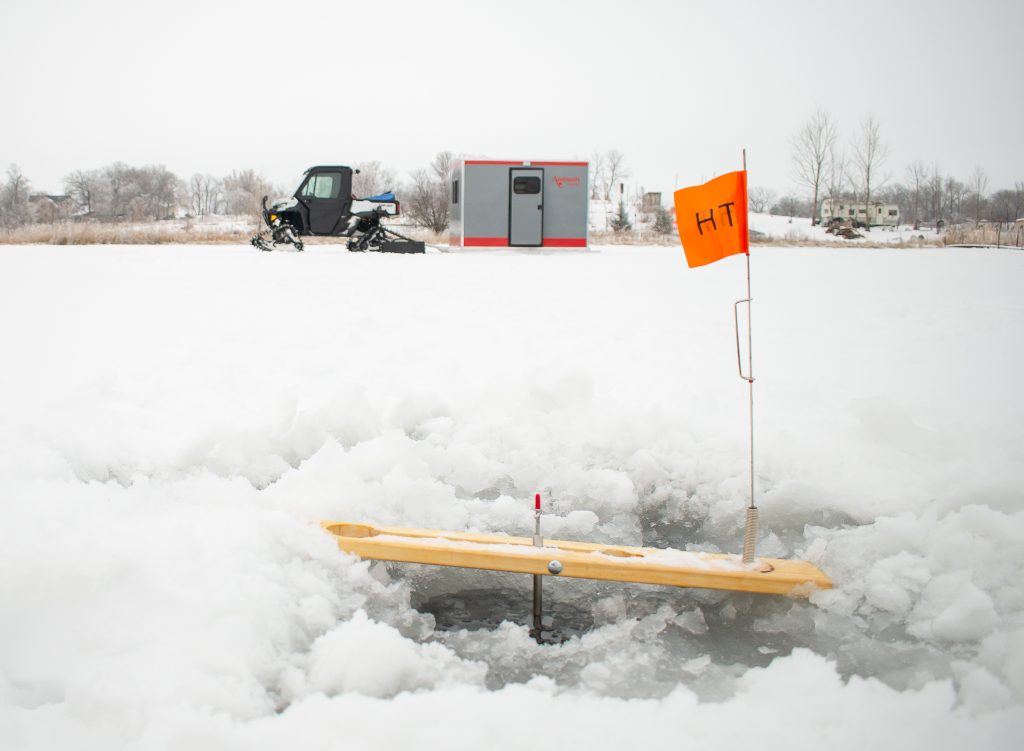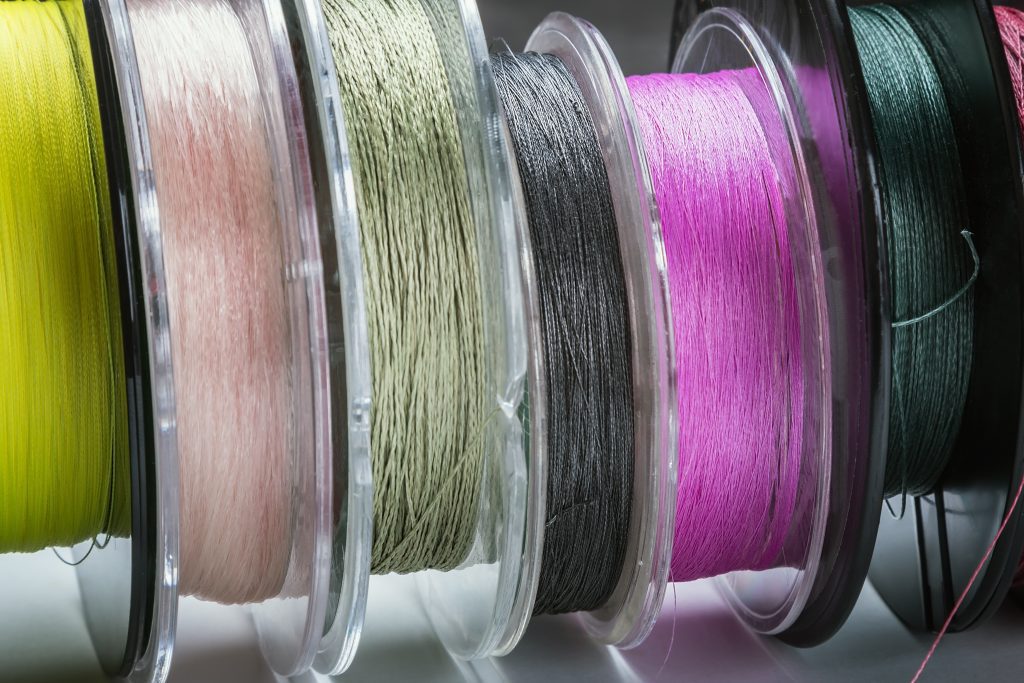What to Consider When Shopping for Ice Fishing Lines
Ice fishing is a beloved winter pastime for many anglers. It offers a chilly, unique experience and a chance to catch fish that are more troublesome during warmer months. However, ice fishing requires specialized equipment, including the right type of fishing line. From line strength to the type and size of fish, there are a number of attributes to think about when shopping around for line. Let’s discuss the main things you’ll want to consider when buying ice fishing line.
Tip-Ups and Rod and Reel Jigging
The two major techniques anglers use in ice fishing are known as tip-up fishing and rod and reel jigging. These two methods have different line requirements and will play into your fishing line needs.
Tip-ups
Tip-ups are an essential tool for ice fishing, especially when targeting species like pike or walleye that require larger bait. This technique consists of a spool of fishing line attached to a wooden or plastic board that sits on top of the ice. When a fish takes the bait, the line is released from the spool, and a flag is triggered to signal a bite. Special, large-diameter test in the 20- to 40-pound range with a 6-foot fluorocarbon leader is a very solid choice. Not only will it resist abrasion from the ice, but the large diameter test will give you more to grab onto in order to manually pull the line out of the water.
Jigging
Ice fishermen that are jigging with rod and reel commonly opt for coated nylon, or a hybrid, copolymer monofilament. There are many benefits to using this type of fishing line, such as ease in knot tying, good abrasion resistance, and stretchiness that aids in battling larger fish. Mono remains an affordable choice for those seeking a more forgiving line; however, it has its drawbacks.
Because of its memory-retaining abilities, the line coils up, decreasing sensitivity and possibly affecting presentation. Even though mono does provide some level of abrasion resistance, it is more susceptible to cutting by teeth and ragged icy edges than flouro or braided line.
Just like tip-up lines, an important aspect of jigging is the line’s diameter. Thin lines sink faster, which is important when fishing deep water. Braided super lines have a smaller diameter than monofilament lines, making them a better choice for jigging in deep water (water deeper than 20 feet). However, it is important to note that braided lines can be more visible in clear water, which can spook fish.
Depth
As a general rule, if you’re fishing waters that are 20 feet and less, monofilament in the 2- to 4-pound range is great for panfish. For walleye and similar-sized fish, use a 6- to 8-pound test. When targeting real big walleye and pike, some anglers crank it all the way up 20 pounds or more. If the water you are fishing is deeper than 20 feet, go with a braided line in the previously mentioned weights.

Ice Fishing Line Strength
One of the most important considerations when buying ice fishing line is the line strength. The strength of the line refers to its ability to withstand the weight and force of a fish. You want to choose a line that is strong enough to handle the fish you are targeting but not so thick that it is visible to the fish.
Ice fishing line is available in a range of strengths, from 1- to 80-pounds. The best line strength for you will depend on the size of fish you are targeting and the depth at which you are fishing.
How Visible is the Line?
Line visibility is another factor to think about. Fish are often more cautious and easily spooked in the clear waters of winter, so you want to choose a line that is difficult for the fish to see. The color of the line can also impact visibility. Clear or blue lines are often recommended for ice fishing because they blend in well with the surrounding ice and water.
Fishing Line Sensitivity and Memory
When ice fishing, you need to be able to feel even the slightest bite from a fish. This is why line sensitivity is so important. The sensitivity of the line refers to its ability to transmit vibrations and movements from the lure to the angler’s hand. The more sensitive the line, the easier it is to detect when a fish is biting. Ice fishing lines made from braided, or fluorocarbon materials are often more sensitive than monofilament lines.
Line memory refers to the tendency of the line to retain the shape it had while on the spool. This can lead to the line curling or twisting, which can impact the presentation of the lure and make it less effective. Monofilament lines are known for having a lot of memory, while braided, and fluorocarbon lines have less. If you are using a monofilament line, it can be helpful to stretch the line before use to reduce its memory.
Ice Fishing Line Type
There are three main types of fishing line used for ice fishing: monofilament, fluorocarbon, and braided. Each type has its own advantages and disadvantages. Monofilament lines are inexpensive and widely available, but they have a lot of memory and are less sensitive than other types of line. Fluorocarbon lines are nearly invisible in the water and are very sensitive, but they tend to be more expensive. Braided lines are very strong and sensitive, but they can be difficult to handle in cold weather.

Line Length
It may not seem obvious, but the length is another aspect you’ll want to consider when buying ice fishing line. The length of the line will, of course, depend on the depth at which you will be fishing and the size of the fish you are targeting. It’s important to choose a line that is long enough to reach the depth you want to fish, but not so long that it becomes difficult to handle.
Other Considerations
Fishing Line Temperature Rating
In addition to these considerations, there are a few other factors to keep in mind when buying ice fishing line. First, it’s important to choose line that is specifically designed for cold weather use. Some types of fishing line can become brittle and break in extremely cold temperatures, so make sure to stick to fishing line that can withstand the conditions of ice fishing.
Species
Also, take into account the species of fish you are targeting. Different types of fish have different behaviors and habits, so you’ll need to choose your line accordingly.
For example, if you are targeting panfish such as bluegill or crappie, a lighter line with low visibility and high sensitivity may be the best option. These species are often found in shallower water and are easily spooked, so a light and sensitive line will allow you to detect subtle bites and provide a more natural presentation.
If you are targeting larger predatory fish such as walleye or northern pike, a heavier line may be necessary to handle their aggressive fighting style. In addition, these species may require a more abrasion-resistant line due to their sharp teeth and rough mouths.
For lake trout or other deep-water species, a thicker and stronger line may be necessary to handle the depth and potential for heavier fish. These species may also require a line with a higher sink rate to get your lure down to the appropriate depth quickly.
The Right Fishing Line For Your Skill Level
Finally, don’t forget to choose a line that is appropriate for your level of experience and skill. If you are a beginner, you may want a line that is more forgiving and easier to handle. If you are experienced, you may be able to handle a more specialized type of fishing line.
Final Thoughts
To wrap it up, buying the right ice fishing line can be crucial to a successful ice fishing trip. There are a ton of choices out there and it becomes a further nuanced topic as you gain more experience. Carefully weigh all these factors so you can choose fishing line that meets your specific needs. By doing so, you’ll be starting off on the right foot and on your way to hooking a monster.




